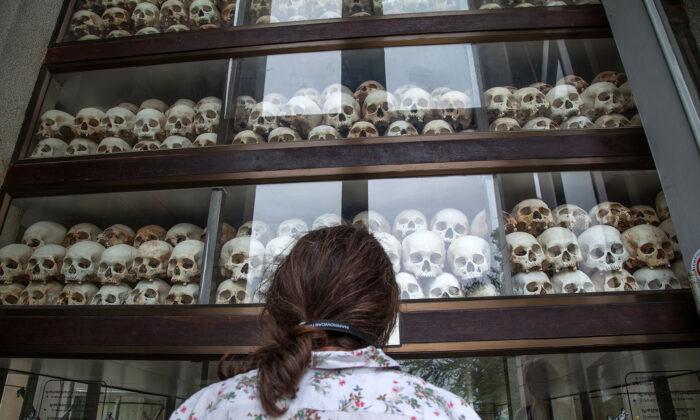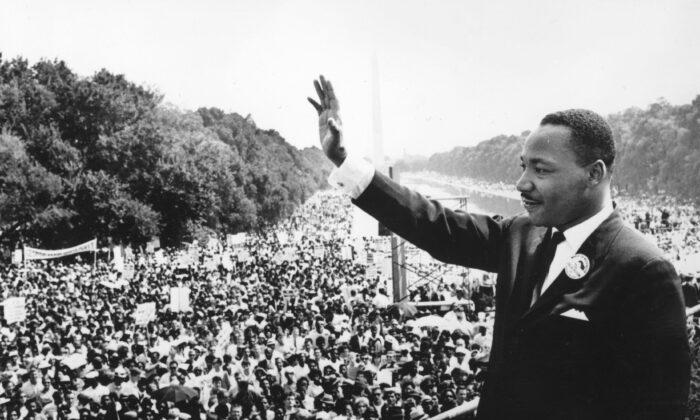As Americans, we have had it good for so long that we often take important things for granted until they are about to be taken away.
As recently as five or six years ago, who would have thought that America’s dominant social media platforms, such as Facebook, Google, YouTube, or Twitter would assault its host country’s First Amendment rights by engaging in the silencing of a huge number of its users through censorship, cancellation, and deplatforming?
Of all the impediments to America’s progress on every front, censorship and cancel culture probably rank right at the top. Many of the younger generation accept cancel culture as being part of depersonalized relationships that social media has fostered. It seems many have gotten used to cyberbullying and the flippant cancellation of people, ideas, and relationships—all facilitated with just a few clicks.
Who Benefits
So why does cancel culture—which is so demonstrably limiting, harmful, and antisocial—exacerbating intolerance and hatred, continue to be on the rise in America? That is best answered by simply identifying who benefits. Clearly external enemies of the United States benefit, particularly those who want to remake the world like the Chinese Communist Party and elites associated with Klaus Schwab’s World Economic Forum, famous for its annual meetings in Davos and its push to bring about the “Great Reset.”These external hostile forces have domestic allies among the elites in the United States, in political parties, government bureaucracies, academia, and in the corporate world, but also with groups such as Black Lives Matter (BLM) and Antifa. The elites use these latter groups in similar ways that Hitler used the Brownshirts. BLM and Antifa are essentially the elites’ footsoldiers used to foment internal fear and division, and to destroy society’s connection with its past, and even precipitate civil war—all of which facilitates the end game of subordinating the United States to the global elite’s new world order.
Much of the cancel culture may not realize that in tearing down and desecrating historical monuments and rewriting history they are unwittingly serving the elites at the top. But by destroying the current and next generation’s respect for the symbols and knowledge of the history and virtue of the American past—from its founding figures and ideals, drafting of a unique constitution based on those ideals, and its redemptive course culminating in the racial equality achieved by the civil rights movement—America can fall like ripe fruit into the hands of its enemies. Canceling and destroying American heritage is necessary to accomplish this end.
Cancel culture is regressive, not progressive—and we can project where it will take us by understanding the past and what has happened to other societies and nations that adopted such practices. And that is of course why the main project of the cancel culture is to disconnect present society from its past.
French Revolution, Russia, China
Cancel culture has its roots in intolerance dating back to the French Revolution (1789–1794), when Robespierre’s Reign of Terror resulted in some 30,000 deaths—a period accompanied by a concerted effort to erase and destroy Christianity and its traditions and institutions. The culmination of that phase of the French Revolution was marked by the regime’s installation of a prostitute as head of the Notre Dame Cathedral. With that affront to decency and elimination of God, Robespierre and his successors thought they could rule without moral constraints.Marxism took the cancellation of culture to a new level. Although that ideology was formulated by Karl Marx and Friedrich Engels in the first half of the 1800s, it wasn’t implemented until Vladimir Lenin’s Bolshevik revolution in Russia in 1917. One of Lenin’s first projects was to cancel the past by tearing down the czarist symbols of Russian history in the form of statues, emblems, coats of arms, double-headed eagles—all destroyed in the name of the revolution and creation of the new man—the “Soviet Man.”
The vast majority of people in the Russian Empire were, at the time of the revolution, religious believers. Lenin ordered his communist vanguard lieutenants to destroy religious institutions and replace religious belief with atheism. In the first year after the revolution, the state expropriated all church property, and in the period from 1922 to 1926, 28 Russian Orthodox bishops and more than 1,200 priests were killed. Many more were persecuted.
Even though there was a concerted effort to hide the wholesale crime committed, it came to be known by the 1960s that Bolshevik and Soviet communist totalitarian rule had resulted in death tolls of more than 20 million and likely upwards of 30 million people.
Like Lenin and Stalin’s communist rule in Russia, Mao Zedong’s communist revolution in China was based on historical determinism—a fundamental tenet of Marxism that required the cancellation of past history and the subordination of its citizens to the collective identity of the communist state.
During the Cultural Revolution between 1966 and 1976, Mao directed his Red Guards to mobilize the population to cancel and rid itself of the “Four Olds”: old customs, old culture, old habits, and old ideas. The result was devastating, with Chinese people turning on each other, with brainwashed youth even betraying their own siblings and parents.
North Korea and Cambodia
In smaller communist countries such as North Korea and Cambodia, the implementation of cancel culture was both more complete and more devastating.After its founding in 1948, North Korea became a closed society, canceled from its past and isolated from the present world around it. Quickly descending into a secretive communist totalitarian state, it would have failed at several points, were it not for aid supplied by the Soviet Union and China. Under successive Kim family dictatorships, North Korea’s brutal communist policies of collectivization and repression killed some 3.5 million of its citizens, many from mass starvation.
Cambodia was even worse. Between 1975 and 1979, the communist despot Pol Pot brought almost complete destruction to his country’s cities and rural areas, turning the entire country into a prison—canceling and eradicating public schools, universities, private property, churches, religious belief, and executing all the educated and well-to-do Cambodians.
In the end, Pol Pot’s genocidal policies killed nearly 3 million people, some two-fifths of the nation’s 7 million population.
These are but some of the examples of the results in states large and small that implemented communism. We think of the 20th century as being the century of progress. But the imposition of communist rule and its totalitarian practices also made that century the bloodiest in human history.
We have been reticent and slow to face the communist threat from China. They aren’t only our greatest military threat externally, but also internally—through its ongoing multi-billion dollar industrial, academic and political espionage and subversion programs operating in the United States—China is also our greatest existential threat.
The starting point of protecting our freedoms and expanding opportunity in America is to refuse to accept or facilitate forces that are clearly associated with repression and tyranny. Even when our political factions and differences make it difficult to build a consensus on new directions and policies, the first rule is “do no harm.”
In short, an appropriate starting point to a better future is to stop the cancel culture and censorship that have been an integral part of the most destructive political systems in human history.





